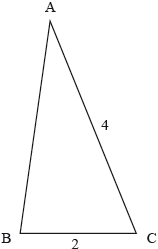| Date | May 2022 | Marks available | 2 | Reference code | 22M.2.SL.TZ1.4 |
| Level | Standard Level | Paper | Paper 2 | Time zone | Time zone 1 |
| Command term | Hence and Find | Question number | 4 | Adapted from | N/A |
Question
A discrete random variable, , has the following probability distribution:
Show that .
Find the value of , giving a reason for your answer.
Hence, find .
Markscheme
OR (or equivalent) A1
AG
[1 mark]
one of OR (M1)
A1
reasoning to reject eg therefore R1
[3 marks]
attempting to use the expected value formula (M1)
A1
Note: Award M1A0 if additional values are given.
[2 marks]
Examiners report
Part (a) was well done in this question, with most candidates recognising that the probabilities needed to sum to 1. Many candidates also approached part (b) appropriately. While many did so by graphing the quadratic on the GDC and identifying the zeros, most solved the equation analytically. Those that used the GDC, often assumed there was only one x-intercept and did not investigate the relevant area of the graph in more detail. While some who found the two required values of k recognised that k = 0.2 should be rejected by referring to the original probabilities, most had lost sight of the context of the question, and were unable to give a valid reason using P(X = 1) to reject this solution. Those that obtained one solution in part (b), were generally able to find the expected value successfully in part (c).


